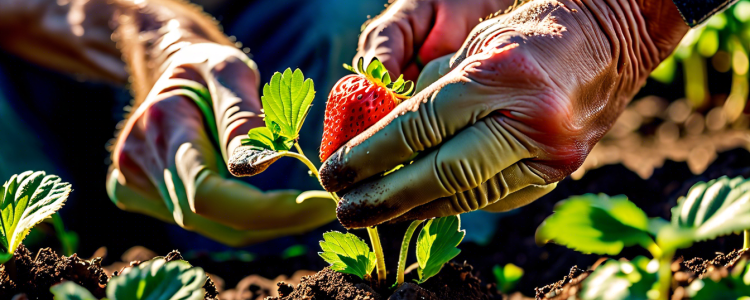Strawberries are delicious and nutritious fruits that can easily be grown in your own garden. Whether you prefer planting strawberry seeds or transplants, this step-by-step guide will help you successfully cultivate these luscious berries. Follow these instructions to ensure a healthy strawberry harvest.
Choosing the Right Variety
When it comes to planting strawberries, choosing the right variety is crucial. Consider the climate, growing conditions, and your personal preferences. Some popular strawberry varieties include:
- June-bearing strawberries: Produces a large crop over a short period, usually in June.
- Everbearing strawberries: Yields multiple crops throughout the growing season.
- Day-neutral strawberries: Continuously bears fruit from spring to fall.
Research each variety to determine which one suits your needs best. Additionally, ensure you have sufficient space and adequate sunlight for strawberry plants to thrive.
Preparing the Soil and Planting
The success of your strawberry plants greatly depends on the soil preparation and planting technique. Follow these steps:
Step 1: Soil Preparation
Start by preparing the soil to provide the ideal growing conditions for your strawberry plants. Clear the area from any weeds or debris and loosen the soil using a garden fork. Strawberry plants prefer well-draining soil with a pH between 5.5 and 6.5. Test the soil and amend it with organic matter or compost if necessary.
Step 2: Planting Strawberry Seeds or Transplants
If you choose to grow strawberries from seeds, sow them in a seed tray filled with well-draining potting mix. Keep the tray moist and place it in a warm area until the seedlings emerge. Once they attain a few inches in height, transplant them to your garden bed. Alternatively, you can opt for transplants available at local nurseries or garden centers. Plant the transplants at the same depth they were growing in their containers, leaving sufficient space between plants to allow air circulation and future growth. Water the plants thoroughly after planting.
Proper Care and Maintenance
Ensuring proper care and maintenance will help your strawberry plants flourish. Follow these essential steps:
Step 1: Watering
Strawberry plants require a consistent supply of water, particularly during fruit development. Water your plants regularly, aiming for around 1 inch of water per week. However, avoid overwatering, as it can lead to root rot.
Step 2: Fertilizing
Apply a balanced organic fertilizer or a slow-release strawberry fertilizer three weeks after planting. Follow the instructions provided by the manufacturer, and avoid over-fertilizing, as excessive nitrogen can result in leafy growth but fewer strawberries.
Step 3: Mulching
Place a layer of mulch, such as straw or wood chips, around your strawberry plants to conserve moisture, suppress weeds, and protect the berries from soil contact. Do not cover the crown of the plants as it can hinder growth.
Step 4: Pest and Disease Control
Regularly inspect your strawberry plants for pests like aphids, slugs, and snails. Use organic pest control methods or seek advice from local gardening experts if necessary. Additionally, be vigilant for any signs of diseases like powdery mildew or gray mold. Remove any infected leaves or fruits to prevent the spread.
Conclusion
Growing strawberries from seeds or transplants can be a rewarding experience. By selecting the right variety, preparing the soil, and providing proper care, you can enjoy a bountiful harvest of these delightful berries. Remember to water consistently, fertilize appropriately, and address any pest or disease issues promptly. Follow this step-by-step guide to ensure the success of your strawberry plants and savor the taste of homegrown strawberries.








